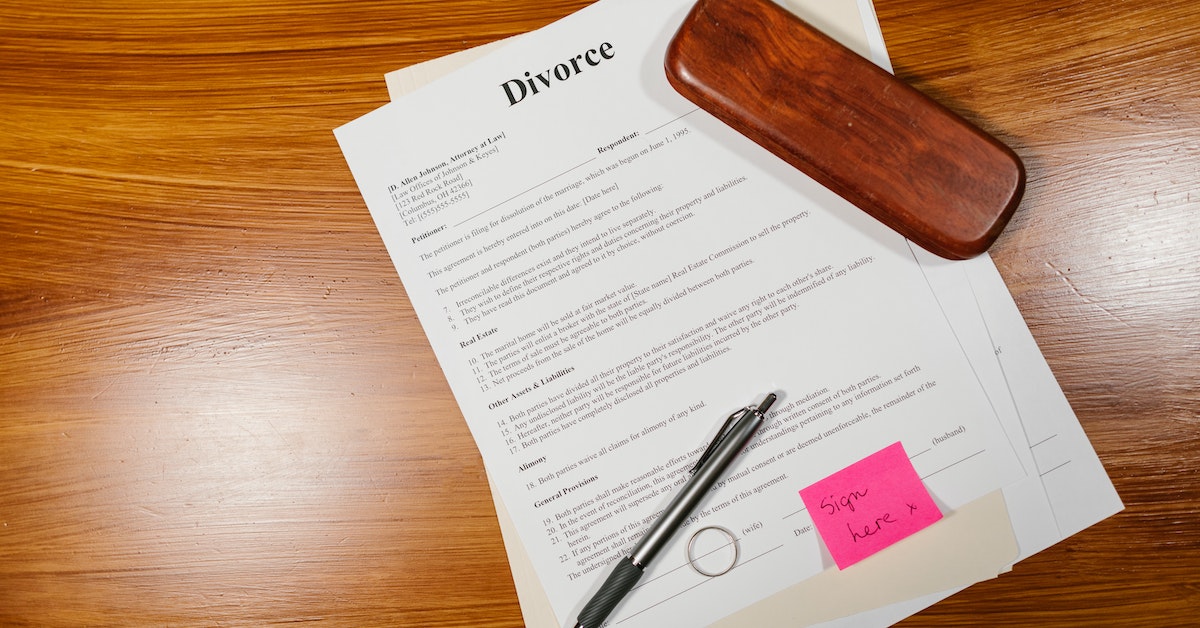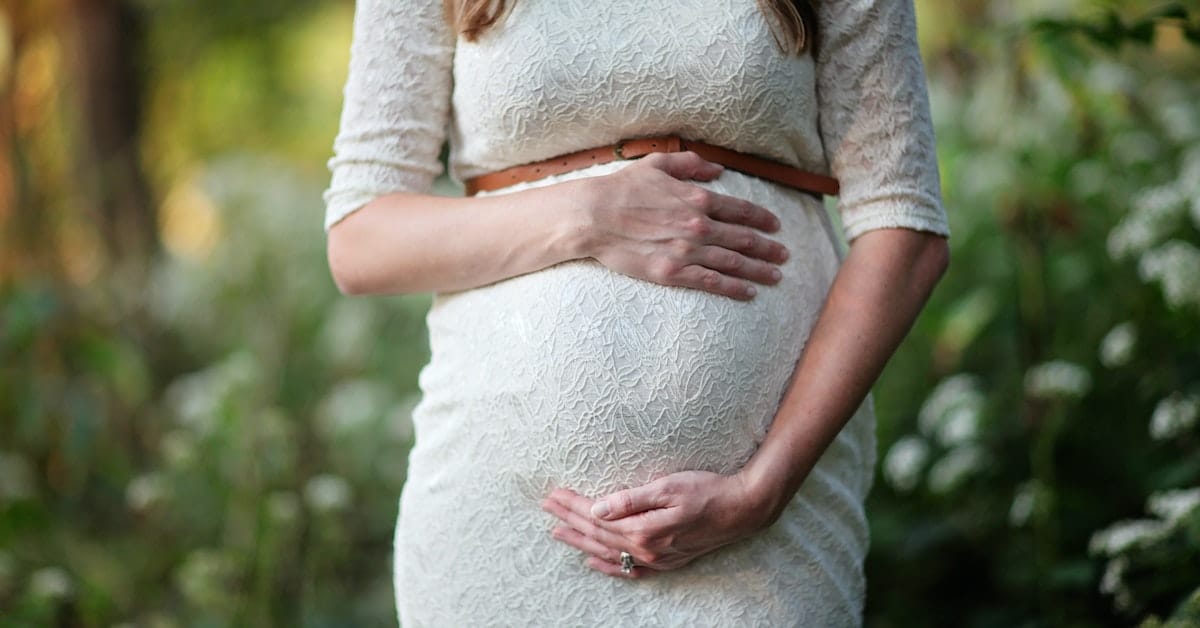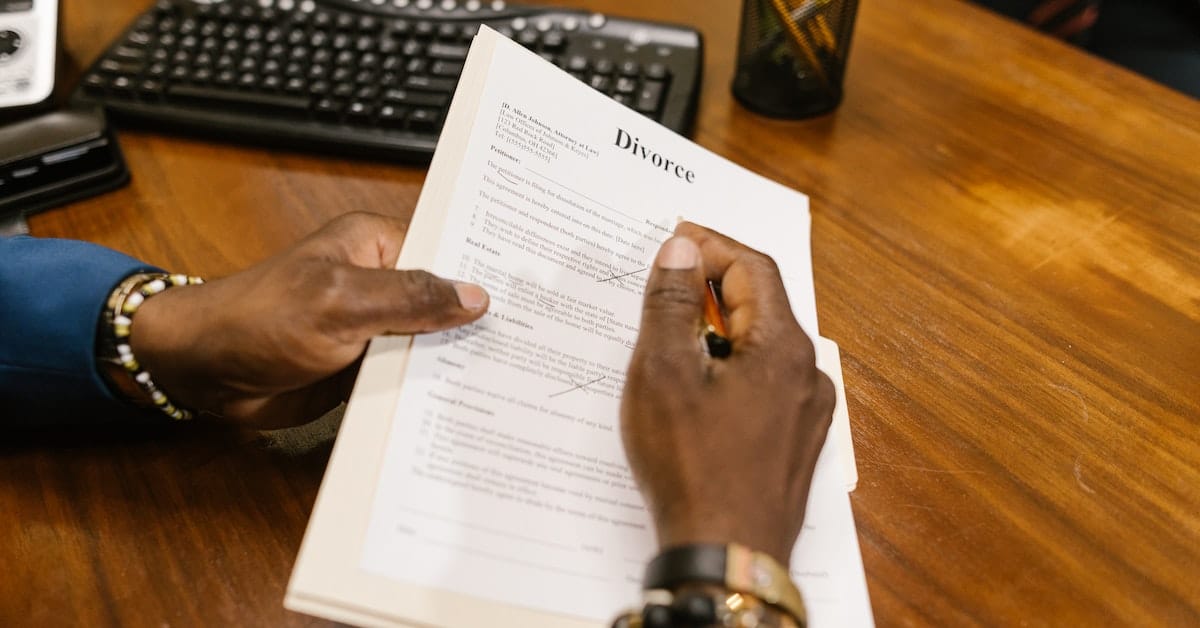There are two primary concerns in most Lone Star divorces. The first has to do with children and child custody issues, while the other is related to how property is divided. If your marriage is breaking up, it's perfectly reasonable to wonder how to protect your assets from divorce in Texas.
The division of property is a bit different in Texas divorces than in other states. The reason for this is that Texas is a community property state, along with only twelve other U.S. states.
If you have a substantial estate and are motivated to protect your assets during the divorce process, you're probably going to want to work with an attorney rather than get a DIY divorce. Even if you don't have ill intent in your efforts to protect your property, acting without the advice of experienced legal counsel puts you at risk of appearing to hide assets.
Let's take a look at what you need to know about pursuing a fair division of property in a Texas divorce.
Most states in the United States are known as equitable distribution states, but Texas is not one of them. Along with twelve other U.S. states, Texas is considered a community property state.
What does this mean? How does this impact the division of assets in your divorce?

The truth is, this is a very significant factor in how property is split up when two people are dissolving their marriage. While estates can get pretty complicated, the short story is that all of the property that you and your spouse own at the time you're getting divorced is assumed to be the property of both parties.
This can be very surprising to people in a day and age when it's increasingly common for spouses to maintain separate financial accounts and make purchases separate from one another. It doesn't matter if you used your income to pay for the home you live in with your spouse, for example-- in the eyes of the law, the home is marital property regardless.
All of the earnings and property of both people in a marriage in Texas that were acquired during the marriage are considered community property.
It doesn't matter at all whose name is on the title or account, whose income paid for an asset, or who took on responsibility for maintaining an asset. If the asset was acquired between your wedding day and the day of your divorce, it's considered community property, except for a few exceptions.

What are those exceptions? An asset acquired during a marriage isn't necessarily considered community property if it was:
Here are some examples of what might be considered community property in a Texas divorce:
The presumption in Texas is that any property acquired during a marriage is a part of the marital estate and, therefore, community property. However, spouses can agree (or, alternatively, one spouse can successfully prove) that a piece of property is the separate property of one spouse.

Separate property is:
Here are some examples of what could constitute separate property in Texas:
If you feel like you are in the clear because you bought your home or car before you got married and therefore they remain your separate property, you'll want to also know about the concept of reimbursement.

For example, let's say that you were using community funds during the marriage to pay for your mortgage or auto loan. In this circumstance, your spouse could ask for reimbursement. The idea is that marital funds were used to pay for separate property, and your spouse, therefore, has the right to ask to be repaid their share of what was spent from the community pot.
Some divorcing couples have little to no assets or debts and no children in the marriage. In these cases, spouses can save a lot of money during the divorce process by filing for a DIY divorce.
However, as soon as there are children involved or any amount of property or debts, it typically makes sense to involve an experienced divorce lawyer.
If you're concerned that you're going to lose your assets during a divorce, the first thing you'll want to do is find the right attorney. Though it might be tempting to try and move community assets around in order to protect them as a part of a divorce, this type of activity is not worth the risks.
For example, some people might try to lend assets to a friend if they smell a divorce coming on or otherwise disburse joint assets to try and keep them out of divorce proceedings. The reality is that there are severe penalties if you are caught hiding assets as a part of a divorce. If you think that your spouse is hiding assets, you'll want to talk to a lawyer about how they can be held accountable and whether you should have a temporary order filed to try and reduce the occurrence of this type of behavior.
Even if your assets are technically considered community property, it isn't uncommon for one spouse to make the bulk of the money in a marriage or control most of the assets.
If this describes your situation, it's natural to be concerned that you're going to lose everything you've worked so hard for.
The good news is that this type of nightmare scenario isn't actually what happens in Texas divorces. The courts are motivated to create a fair outcome and are notably not eager to give a spouse a "free ride" in terms of practically unlimited spousal support or receiving the bulk of the assets. As an example, Texas is one of the most difficult states in the country for spouses to receive alimony.
The courts in Texas aren't trying to pick sides or punish one party by stripping them of their assets. The Texas Family Code is written in a way that attempts to create fair outcomes and prevent lopsided outcomes.
Individuals with substantial estates are most certainly going to work with an attorney leading up to a divorce.
Once there is a considerable amount of money at play, things start to get a lot more complicated. Unless you are a divorce lawyer yourself, it is highly recommended to work with experienced attorneys who will look at your specific financial situation and come up with a plan that best serves your post-divorce goals.
When you realize that you're getting a divorce in Texas, probably your first concern is who is going to get the kids (if you have them.) After that, you're next thought is most likely about what's going to happen to your assets.
Since Texas is a community property state and there are severe penalties for hiding assets during a divorce, the best thing you can do is to work with an experienced lawyer.
If you're interested in learning more about divorce in Texas, make sure you check out our Texas Divorce Laws blog!
You've probably heard that people are more likely to get divorced when they've already had previous marriages. In this post, we'll take a look at exactly how many third marriages end in divorce in Texas.
When you get married for the first time, you typically expect that it will last forever. Once you've been divorced once or twice and are getting married again, though, it can change your perception. New issues are introduced, and relationships can become more complex, which can make it more likely for subsequent marriages to dissolve.
This reality shows up glaringly in the statistics. While second marriages have a 60% chance of ending in divorce, nearly three out of every four third marriages are dissolved.
The divorce rate in Texas was 1.4 divorces per every 1000 individuals in 2021, according to the Centers for Disease Control and Prevention. Although this might make it sound like divorce is a rare occurrence in Texas, you have to remember that Texas is the second biggest state by population-- home to nearly 30 million people in 2021.

This means that more than 40,000 people were getting divorced in Texas during this year. Though this certainly sounds like a significant number of people, it's also worth noting that the divorce rate in Texas has dropped significantly since 1990, when there were 5.5 divorces per every 1000 individuals.
Are you interested in learning more about how many marriages in Texas end in divorce? Take a look at our guide to the divorce rate in Texas.
The number of divorces in 2021, according to the CDC, was 2.5 for every 1000 people. These stats include annulments in addition to divorces. This amounts to nearly 700,000 divorces across the country during this year.
Like the Texas divorce rate, the national divorce rate has been on the decline in the past several decades. During the early 2000s, the divorce rate across the country was four divorces per 1000 people.
Are you wondering if you'll be able to get alimony as a part of your divorce? Check out my post about how long you have to be married to get spousal support in Texas.
How long the average couple stays together after marriage has to do with a number of factors, including whether it's their first, second, or third marriage.

According to a recent analysis that looked at which states had couples that stayed married the longest, the average marriage length in Texas, overall, is 17.5 years.
The national average when it comes to the number of years couples stay married is 21 years for first marriages. The average length of second marriage is 17 years, while the average length of third marriages across the country is 13 years.
Did you start the divorce process but you're having second thoughts? Take a look at our article about how long a divorce can be put on hold in Texas.
Studies have found that it gets harder and harder to maintain a successful marriage when you are getting remarried after divorce. The larger the number of prior divorces a person has experienced, the less likely the marriage is to succeed.

According to some research, 67% of second marriages end in divorce across the country, while 73% of third marriages end in divorce.
In Texas, 6% of the population has been married three times or more. This is significantly lower than the states that top the charts in this category-- including nearby states of Oklahoma and Arkansas-- but quite similar to the national average of 5%. In Oklahoma and Arkansas, roughly 10% of the adults in these states who have ever been married have been married at least three times.
Other states are much less likely to have individuals who have been married and divorced so many times. For example, in Massachusetts and New York, only 2% of ever-married American adults have walked down the aisle at least three times.
To learn more about divorce in Texas, take a look at my posts about the requirements for getting divorced and what you should know about divorce mediation.
One might assume that individuals who are getting married a second or third time would be more likely to make subsequent relationships work, but this isn't statistically the case.

There are a number of reasons why second or third marriages are more likely to fail than first marriages, including:
Are you wondering what's going to happen to your marital estate in a divorce? Take a look at our guides on who gets the kids, who gets the house, and who gets the car in a Texas divorce.
According to research about divorce in the United States, most divorces will happen within the first eight years of marriage. Couples that have made it to the ten-year mark in their relationship are much more likely to stick together for the long haul.
If individuals do get a divorce, the average time between divorce and remarriage in the U.S. is between three and four years. Marriages that occur after divorce are statistically less likely to succeed than first marriages.
When two people walk down the aisle after having two previous marriages, their chance of getting divorced is significantly increased. This is true both in Texas and in the United States as a whole.
There are a lot of reasons that this could be the case, including:
All that being said, this doesn't mean it's necessarily foolish to get married for a third time. Everyone's situation is unique, and it may have taken these previous experiences for you to really find the right person. Just because the statistics are quite shocking when it comes to third marriages and divorce doesn't mean that you are doomed to be a statistic.
Are you looking for more resources to help you understand family law, marriage, and divorce in Texas? Check out our Texas Divorce Laws blog to help you understand your rights and responsibilities under the law.
Divorcing a spouse is complicated enough on its own, but when you throw a pregnancy into the mix it can feel downright overwhelming. Can you get a divorce while pregnant in Texas, or do you have to wait to dissolve your marriage?
You cannot finalize a divorce in Texas while one spouse is pregnant in an opposite-sex marriage. Couples must wait for the baby to be born before a judge will sign the Divorce Decree. However, you can file for divorce and work to negotiate your agreement with your spouse while one of you is pregnant.
Let's take a look at what you need to know about pregnancy and divorce in Texas.
In Texas, a divorce cannot be finalized if one spouse is pregnant in an opposite-sex marriage. In a same-sex marriage between two women, the legality of finalizing a divorce while pregnant is unsettled. For this reason, it's important to talk with a lawyer who is familiar with this area of the law to determine how to proceed.

Considering that you can't finalize a divorce while you're pregnant, it may have crossed your mind to keep your pregnancy hidden. Make sure you check out my recent article about lying about pregnancy during a Texas divorce before you make any final decisions.
If you are getting divorced from a spouse of the opposite sex, your divorce can't be finalized until the baby is born. Whether or not the Final Decree of Divorce has to include custody and support orders depends on the question of paternity.
Here are the two possible options depending on whether the husband is the father of the child:
Interested to learn about how assets will be divided in your divorce? Check out our guides about who gets the house, who gets the kids, and who gets the car in a Texas divorce.
Though you cannot finalize a divorce during pregnancy, that doesn't mean you can't begin the process of divorce by filing the initial paperwork.

If you choose to file for divorce while one spouse is pregnant, you'll want to be prepared to wait. The child must first be born before the divorce can be finalized. On top of that, there is a mandatory sixty-day waiting period that couples must go through after filing. Depending on how far along into the pregnancy the woman is when the paperwork is initially filed, this could mean waiting even longer after the baby is born.
It's worth noting that there are some exceptions to the mandatory waiting period, but there are fairly strict rules surrounding who is exempt. According to Texas Law Help, a resource that is managed by the nonprofit Texas Legal Services Center, the only two exceptions to this rule are:
- "If your spouse has been convicted of or received deferred adjudication for family violence against you or a member of your household.
- If you have an active protective or magistrate's order against your spouse because of family violence during the marriage."*
*Source: Texas Law Help
Before a baby is born, there are certain questions that remain unanswered that could impact child custody and support orders. For example, it's possible that different custody arrangements and more financial support could be deemed necessary if the baby was born with serious health issues.
This doesn't mean that couples pursuing a divorce can't work to negotiate their agreement while the woman is pregnant. Of course, this is assuming that there aren't any questions about who the biological father is. If there is uncertainty or complexity surrounding the issue of paternity, there are additional issues that have to be addressed before divorce can be finalized.
Another factor that can complicate the process of getting divorced when there is a new baby on the way is the question of paternity.
Paternity is a term that refers to the legal recognition of the genetic father of a child. The child's biological father is legally considered the father of the child once paternity is established. Along with this legal designation comes all of the rights and duties of a parent.
There are three ways that paternity can be established. These are:
If the husband isn't the biological father of the child, the two methods of establishing paternity are voluntary acknowledgment and court order.
If your husband isn't the father of your child, you might be wondering if there are laws on the books about getting married again after finalizing a divorce. Make sure you check out my article about how long you have to wait after divorce to get remarried in Texas.
If all of the parties involved (husband, wife, and biological father of the child) agree as to who the father is, here is what must unfold:
Two things occur once both of these forms have been filed with the Texas Vital Statistics Unit. These are:
Neither of these forms is considered valid until they have both been completed and filed. They must be filed with the Texas Vital Statistics Unit.
The other method of establishing paternity when the husband isn't the biological father is by court order.
In order to begin this process, one of the following parties must file a paternity case in order to ask for a paternity order:
If necessary, the judge will order DNA testing in order to determine who the father of the child is. At the point when a paternity order is signed by the judge (known as an Order Adjudication Parentage), the following occurs:
It's worth noting that the paternity order can include other orders. These include:
Though these orders can be included in the paternity order, they don't have to be.
Both divorce and pregnancy can be stressful, overwhelming experiences. Though you are able to begin the process of getting divorced in Texas while pregnant, the judge will not be able to sign the Final Decree of Divorce until the baby has been born. Things can become more complicated if there is a question about paternity, as paternity will need to be established before the Divorce Decree can be finalized.
Are you in the process of getting divorced in Texas? Make sure you check out our Texas Divorce Laws blog for more resources.
If you're selling a house after a divorce agreement in Texas, you probably have a lot of questions.
For example, is it better to sell the home before or after the divorce is finalized? How are the proceeds from the sale divided? Is it possible to keep the home after your divorce?
In Texas, what happens to your home will have to do with whether it's considered separate or community property. While it's best for you and your spouse to come to an agreement about what to do with the home that works best for both of you, a judge can also order you to sell the home or award it to one spouse.
Let's take a closer look at what you need to know about how to navigate selling a home in Texas after a divorce agreement has been reached.
Before we get into the details about selling a house after a divorce in Texas, let's cover some of the basics of how real estate is handled in a divorce.
Texas is one of only nine states that is a community property state rather than an equitable distribution state.

An essential question to answer before starting to think about selling your home is whether it is considered separate or community property.
If both spouses inherit a home together during the marriage, the property is still actually considered separate property. Each party owns half of the home and is considered a co-owner.
Even if a property was purchased during the marriage that only has one spouse's name on the deed, the home is considered community property. It's worth noting that there are a few exceptions to this general rule, though. For example, if one spouse buys a house using their own separate property, the home is considered separate rather than community property. That being said, the onus is on the spouse that bought the house to prove the purchase was funded by separate property.
If a home is determined to be the separate property of one spouse, the other spouse can't be awarded the house by the court. At the same time, the person who claims the house is their own separate property has to provide evidence that is both clear and convincing to this end.

If a home is considered community property, it will need to be divided as a part of the divorce process. Of course, you can't actually split a house in half to give to each spouse. Instead, the parties have to figure out the value of the property and determine how to divide any debt or equity.
Here are some of the most common ways that real estate is divided in a divorce when the house isn't being sold:
In some cases, divorcing couples simply can't reach an agreement about how to divide the home. This can lead the judge to either award the house to one party or order the spouses to sell the home.
In some instances, a judge might order that the house is sold after a divorce. The equity that the couple has in the property is, therefore, split between the spouses through the proceeds.

The exact details of how the proceeds are split are going to depend on a number of factors. In general, though, if a couple doesn't have children and have relatively similar financial situations in a no-fault divorce, the equity would be split down the middle.
A number of factors can impact how the equity is divided, including:
Wondering what will happen to the family car after a divorce? Read our article about how vehicles are divided in a divorce in Texas.
Selling a house after a divorce can be an emotionally taxing process. Both divorce and the process of selling a home are stressful and overwhelming experiences in their own right. When you combine them, it can feel like simply too much to bare.

It's important to remember that it's perfectly natural to experience a rollercoaster of emotions during both the divorce and home-selling processes. Rather than sweeping these feelings under the rug, it's essential that you acknowledge and recognize these emotions. Rather than pretending like everything is fine, give yourself the space to grieve as you are dealing with several major life changes at once.
After your divorce, you might have a number of different options when it comes to selling your house:
It's important to make sure you are making this decision with as much headspace as possible. You'll want to think about what it will mean for your life to either keep living in the home or to sell your marital home. Beyond that, think about how both possibilities could impact your post-divorce housing plans and finances.
A number of questions need to be answered when you and your spouse agree to sell the home after a divorce.
Some of the details you'll want to resolve include:
Figuring out these types of details ahead of time can help avoid major issues and roadblocks along the way. Coming up with a contingency plan is also a prudent thing to do in case one spouse gets sick or otherwise can't participate in the process.
In some cases, a couple might choose to sell their home before the divorce is finalized. This can have some benefits, including helping make it easier to prepare for your post-divorce life and simply helping you enter your new phase of life more quickly.
At the same time, though, it can add complexity and confusion when you try to sell the home before the divorce is complete. It can also force you to sell when market conditions aren't ideal and even push back the date when your divorce is finalized.
It's also important to consider the capital gains tax implications when you sell the home. This is something you'll want to talk to an attorney or financial advisor about.
It's important to work closely with your attorney when selling your home after a divorce. With their help, you will be able to navigate both the legal requirements and paperwork necessary to sell your house with as few hiccups as possible.
In the division of assets in a divorce, the family home is typically one of the largest items on the table. For this reason, it's important to weigh out all of your options when deciding what to do with your home.
In some cases, a judge might order you and your spouse to sell the home. This will only happen, however, if the two of you can't come to an agreement on your own.
It's a good idea to talk to an attorney before you make any big decisions about asset division, including what you do with the marital home. For more information about divorce and marriage in Texas, make sure you check out our Texas Divorce Laws blog.
In most states, there aren't any laws that prevent married couples from getting a divorce during pregnancy. In Texas, though, a divorce can not be completed when one spouse is pregnant. If you are eager to end your marriage but have learned that you're pregnant, the idea of lying about pregnancy during divorce may have crossed your mind.
What happens if you don't disclose that you are pregnant during a divorce? Are there any potential consequences?
During a Texas divorce, you will be asked about unborn children on your Divorce Petition and before the divorce is finalized. If you intentionally lie, you are technically committing perjury. Perjury is a serious crime that can come with severe consequences.
Let's take a look at everything you need to know about pregnancy and divorce in Texas.
You cannot get divorced in Texas if one party is pregnant in an opposite-sex marriage. The situation is not as clear-cut for same-sex marriages, so it's best to speak with a lawyer if either spouse is pregnant.

In terms of opposite-sex marriages, you will have to wait to complete your divorce until after the child is born. Here's what happens depending on whether or not the husband is the genetic father of the child:
The term paternity refers to the legal identification of the biological father of a child.
When it is determined who the genetic father is and paternity is established, the biological father then becomes the legal father of the child. This means he will have all of the rights and duties of any other parent.
There are three ways that paternity can be established:
Are you wondering how long you'll have to wait to get married after your current marriage is dissolved? Check out our post about how long after divorce you can remarry in Texas.
What happens if the husband in the divorce proceeding isn't the father of the child?

There are two different ways that paternity can be established in this type of circumstance:
The parties involved can establish paternity by voluntary acknowledgment when everyone is in agreement.
Once both of these documents have been signed, they are filed with the Texas Vital Statistics Unit. At this point, the following happens:
The AOP and DOP can either be different forms or one form. They do not need to be signed and filed simultaneously. However, both must be completed and filed before either is valid.
If paternity cannot be established voluntarily, the other option is through a court order.
A paternity case can be filed to request a paternity order.
The following parties can file this type of case:
DNA testing will then be ordered if necessary. Once paternity has been established, the judge will sign the paternity order. In Texas, this is known as an Order Adjudicating Parentage.
Once the order is signed, the following occurs:
Paternity orders can include child support, visitation, custody, and medical and dental support orders. However, these orders aren't required to be a part of the paternity order.
You can complete the Acknowledgment of Paternity (AOP) and the Denial of Paternity (DOP) when the child is born at the hospital. When you sign the forms at the hospital, the hospital will then file them with the Vital Statistics Unit.

You can also complete these forms before or after the birth of the child. You will need to sign them at a certified entity, such as a child support office or a local birth registrar. You can use this tool from the Attorney General of Texas' site to find certified entities near you.
Are you wondering what's going to happen to your estate in a divorce? Check out our posts about who gets the kids, the car, and the house in a Texas divorce.
In order to get a court order that establishes paternity, you'll need to file a paternity case. This is a very complicated process. Rather than going it alone, you might want to hire a private lawyer or open a case with the Office of the Attorney General.
If you live in Texas and you want to get a divorce, a pregnancy is going to delay the process. This might make you wonder whether it's worth keeping your pregnancy to yourself to ensure that you can get a swift divorce.

In reality, you do not want to lie about your pregnancy and push the divorce proceedings forward. The divorce petition will ask about unborn children, and this question will come up again before the marriage dissolution is finalized.
If you lie on these forms, you are committing perjury. This is a serious crime that can have very severe consequences.
Are you just starting to learn what a divorce in Texas will consist of? Make sure you take a look at our posts about. the requirements for divorce in Texas and getting a DIY divorce in Texas.
There are potentially serious penalties for lying as a part of a divorce. When a person willfully tells an untruth after taking an oath, it is generally considered perjury.
Proving perjury can be a difficult matter. It requires that there is actual factual evidence that supports that perjury occurred and was malicious in nature.
Just because perjury isn't always simple to prove, however, doesn't mean it's a risk that is worth taking. The penalties for perjury in family court can range depending on the nature of the offense. Perjury can range from a misdemeanor to a felony, and penalties can range from civil penalties to time in jail.
Judges take the issue of perjury incredibly seriously. A judge in Texas will not be shy about sending someone right to jail in the midst of a divorce trial.
If a judge has already finalized your divorce, but you've recently realized they lied about a pregnancy, it might be possible to reopen the settlement. You have to be able to provide concrete evidence that your spouse intentionally lied, however.
Most divorce judgments have a provision that lets either party reopen the case if one spouse learns that the other deliberately falsified court documents or lied. Deceitful spouses have, in some instances, lost their entire share of the estate once the court determines they intentionally lied.
What does it mean for your divorce if your spouse committed adultery? You can learn more in our article about how adultery in a Texas divorce affects child custody and alimony.
Getting divorced is incredibly stressful. When you add pregnancy into the mix, the situation can feel overwhelming.
Whether you are pregnant yourself or you're concerned that your spouse is lying about pregnancy, it's important to recognize that lying about pregnancy in a Texas divorce can have serious consequences.
When it comes to getting divorced, knowledge is truly power. If you're searching for more resources to help you learn about your rights and responsibilities in a Texas Divorce, make sure you check out our Texas Divorce Laws blog.
According to the U.S. Census Bureau, most Americans that get divorced will get remarried within five years. How soon is too soon, though? How long after divorce can you remarry in Texas?
Most states don’t have a waiting period before remarriage after divorce, but Texas is an exception. You must allow thirty days between the finalization of your divorce and entering a new marriage to ensure that both spouses have a full thirty days to appeal the terms of the divorce after the decree has been signed by a judge.
In most states in the US, you have the option to enter a new marriage immediately after your divorce. In eight states and Washington D.C., however, there is a mandatory waiting period that mandates individuals wait a certain period of time before getting remarried after a divorce.
Texas is one of the states with a mandatory waiting period. You must wait 30 days after your divorce is finalized before you can enter a new marriage.

The other states (and D.C.) with mandatory waiting periods for remarriage after divorce are:
In Texas, along with most of the other states where there is a mandatory waiting period, the amount of time required between divorce and remarriage aligns with the appeal period for couples to fight their divorce.
In some states, your marriage isn’t technically finalized, and divorce decrees aren’t issued until the waiting period is over. This means that couples in these places are still legally married until the waiting period has reached its completion.
This isn’t true of Texas, though. In Texas, your divorce is finalized when the judge signs the divorce decree. That being said, you still can’t legally get remarried until thirty days have passed. There are a few exceptions to the rule, which we’ll explore later in the article.
The parties involved in a Texas divorce suit have thirty days to file an appeal after a divorce has been finalized. The waiting period exists to ensure that both spouses have the option to appeal the terms of the divorce agreement. When thirty days come and go after a divorce, both spouses can know with certainty that the divorce terms aren’t going to change, and they can move forward with a new marriage if they so choose.

It’s worth noting that there is also a sixty-day waiting period between when you file for divorce and when a judge can finalize your divorce. On top of that, there is a 72-hour waiting period after getting a marriage license before you can legally marry in Texas. This means that there is at least a 93-day period between filing for divorce and getting remarried to a new spouse.
You can find more information about the typical timeline of divorce in the Lone Star State in our guide to how long a divorce takes in Texas.
There are two exceptions to the mandatory waiting period after divorce before getting remarried:
In the next section, we’ll look at some of the reasons why a judge might choose to waive the waiting period. If you’re wondering whether it’s ok to start dating again before you have your final divorce decree in hand, take a look at our article about what to watch out for when dating before divorce is final in Texas.
It is possible to have your thirty-day waiting period waived. You can do this by filing a motion with the judge, and this motion can be filed without the agreement of your former spouse.

However, a judge will only grant such a waiver for “good cause.” There are a number of circumstances that can qualify as good cause, including:
The decision of whether or not to waive the mandatory waiting period is ultimately up to the judge. If you feel you should be able to remarry before the thirty-day period is over, you might consider hiring a family law attorney to help you make a strong case for the waiver.
If you are getting divorced without a lawyer, make sure you read our guide to pro se divorce in Texas. For ideas about how to keep costs down during divorce, take a look at these cheap divorce options in Texas.
Though it can be frustrating to realize that you are barred from getting remarried right away after your divorce, it is a good idea to respect the thirty-day waiting period.

If you get married to a different person before the waiting period is over and you don’t receive a waiver from the judge, your new marriage is considered “voidable.” For a period of time, your marriage could be challenged.
Getting remarried before the end of the waiting period also gives a disgruntled ex-spouse an opportunity to challenge your new marriage or otherwise create legal drama. It is simply easier to wait thirty days before entering a new marriage so that you don’t end up back in court with your new marriage found to be void.
Getting remarried can have an impact on the terms of your divorce in some instances.
If there are any material changes in your assets during the thirty-day waiting period after divorce, your ex-spouse can question whether this new property was actually owned while the marriage was still legally binding. This is one of the reasons it is so important to wait thirty days after divorce before getting remarried.
Similarly, it’s generally a good idea to wait to remarry until your ex has complied with all of the property division agreement terms and transferred all of the property that is now rightfully yours.
Getting remarried won’t have an impact on the custody rights of a parent unless the remarriage is found to not be in the best interest of the child. For instance, a judge could alter the custody arrangement if one of the parent’s new spouses is found to be abusive.
Getting remarried after a divorce typically means that you will no longer be able to receive spousal support. These payments from one spouse to another after divorce don’t intend to support the spouse receiving the money indefinitely– instead, they intend to help the recipient make ends meet until they can get the education or training necessary to support themselves.
Unless you’ve received a waiver from the judge to enter a new marriage or you are remarrying the spouse you just divorced, it is best to abide by the mandatory thirty-day waiting period outlined under Texas Family Law. Otherwise, you are leaving yourself vulnerable to legal trouble and the potential for your new marriage to be voided.
Getting divorced is a stressful life experience for anyone, but learning about your rights and responsibilities under Texas Family Law can help make the whole process go much more smoothly. For more information about divorce, marriage, and more, check out our Texas family law blog.
Your divorce is finally over– congratulations! Though you’ve passed an important milestone, it’s important to recognize that your hard work isn’t quite done yet. There are a number of affairs that will need to be put in order once a judge grants you divorce– including removing a name from your deed.
If both you and your spouse were on the deed for your property and only one of you was awarded the home, you’ll want to transfer ownership as soon as possible. You can do this with a Warranty Deed. Beyond that, you’ll need to ensure that the names on your mortgage loan reflect the new ownership arrangement.
In general, a home or other piece of real estate that was bought during a marriage is assumed to be marital property that both spouses owned. This is the case even if only one spouse’s name is on the deed.
If you’re wondering how your prenup might impact property division, take a look at this guide to prenuptial agreements.
Property purchased during the marriage will need to be divided during the divorce process. If both spouses’ names are on the deed, this usually means that one name needs to be removed.

You’ll find a detailed legal description of the property in question and who is receiving it as a result of the divorce in your divorce decree. This document should also outline which spouse is responsible for all of the associated expenses that go along with owning the property.
Your divorce decree can, in some cases, operate as a muniment of title. This essentially means that the divorce decree on its own might be sufficient to transfer the property to the appropriate spouse. Even though this can be the case, it’s important to understand that the divorce decree alone doesn’t actually change the property records so that they reflect who the owner now is.
When one spouse is awarded the house by a judge via a signed divorce decree, the other spouse has to transfer all of their interest in the property to the spouse that is receiving the house. In most cases, this is done with a Special Warranty Deed.
Once the Special Warranty Deed is signed by the other spouse, it needs to be filed with the Office of the County Clerk so that it can be included in the county’s property records.
The other option is to file a property deed that transfers the house into the name of the spouse that won the home in the divorce.
A Warranty Deed is required when you are transferring a house after a Texas divorce. The Special Warranty Deed is the most common deed that is used for this purpose, but a General Warranty Deed can also be used.

The deed needs to be signed in front of a notary by the spouse whose name is being removed from the title. This signed and notarized document is then filed at the County Clerk’s Office in the same county as the home.
You will need to submit the original signed deed to the clerk’s office– a copy isn’t sufficient.
There is also usually a recording fee that will be charged in order to file the deed. The precise amount can vary depending on the county, but it’s usually around $30 or $40.
For more information about the financial aspects of getting divorced in Texas, take a look at our guide to the cost of a Texas divorce.
It’s also worth noting that many county clerk’s offices only accept cash, a money order, or a certified check. They commonly don’t accept personal checks. It could be prudent to confirm the accepted payment methods ahead of time before driving to the office.
The original deed will be returned to the new property owner once it has been filed. This process will also update the tax records so that the new owner receives the tax bills associated with the property.
It’s important to note that the Warranty Deed only takes care of the transfer of ownership and doesn’t impact the names that are listed on your mortgage. In order to remove a spouse from a home loan, you will need to work with the mortgage company, which we discuss in the next section.
Do you need to change your name after your divorce? This guide walks you through the steps you’ll want to take.
Though transferring ownership of your property after divorce is an important step, you’ll also want to consider whether you have a mortgage on the home and whose name is on the loan.

If only one spouse’s name is on the mortgage and they were awarded the property during divorce, you won’t have to make any changes.
However, if both spouses’ names are on the mortgage and only one spouse was awarded the home, you’ll need to refinance the mortgage in the name of the new property owner.
Refinancing a mortgage can take time, as the lender will take a look at the individual’s assets and income to determine whether they will be able to refinance the mortgage.
You should find in your final divorce decree a statement about whether refinancing will be necessary on the part of the spouse that’s keeping the house. It should also state how long they have to refinance the loan.
When you have this in writing in your divorce decree, it can make it possible to file a motion to enforce the decree if your spouse doesn’t refinance the mortgage within the allotted time. That being said, the court doesn’t have any authority to order a lender to give a loan.
When you refinance a home loan, it means that a new loan is being created. As a part of the refinancing process, the old loan is paid off. The ex-spouse, that isn’t on the deed or mortgage anymore, won’t be responsible for any liens, past due mortgage payments, or other types of property-related debt.
If the thought of refinancing your mortgage is daunting, there is another option. Some lenders will remove the ex-spouse’s name from the loan if they are presented with a divorce decree and the appropriate warranty deed. This would then leave the original loan as it is but only with one spouse’s name on it. Even loans that are underwritten by governmental organizations (such as VA loans) can have a spouse’s name removed in some cases.
Unfortunately, ex-spouses can sometimes be unwilling to cooperate when it's time to transfer the house after a divorce. Or, relatedly, you might be struggling even to locate them.
If you’re struggling to find your spouse during the divorce process or they are being completely uncooperative, you’ll want to read up on the process of getting a default divorce.
If you find yourself in this situation, you might be able to file a certified copy of your final decree of divorce with the county clerk’s public property records.

In these instances, your divorce decree can act as a “muniment of title.” This will need to be a certified copy and not just a regular copy.
What makes a copy of your divorce decree certified? It will be signed by the clerk and have a stamp on it that states that it is certified. You’ll need to file this document in the property records once you receive it. You will want to file the certified copy at the clerk’s office in the same county where the house is.
If you don’t want your divorce decree to become a part of the public record, though, you will want to get and file a Warranty Deed. When you file a divorce decree in the property records, it means that it enters the public record. If this is the route you have to take, you’ll want to black out any private, confidential information that shouldn’t be included in the public records.
If you need to remove your name or your spouse’s name from the deed to your home after a Texas divorce, the spouse that no longer owns the property will need to sign a Warranty Deed and file it with the county clerk’s office where the property is located.
If both of your names are on the mortgage, you’ll want to either refinance or ask the lender to release one spouse from the loan.
Searching for more information about your Texas divorce? Check out our Texas family law blog!
The Final Decree of Divorce is a document that contains all of the judge’s final orders in your divorce case. It will outline your rights and responsibilities regarding your marital property, your children, and more. It is, therefore, essential that you learn how to fill out a Final Divorce Decree in Texas properly.
You are legally required to comply with the requirements of your Final Divorce Decree. For this reason, if your divorce is contested or in any way complicated, it is a good idea to work with an attorney, at least during the final decree drafting process, if not throughout the entire divorce. Even in simple divorces, it can be useful to hire a lawyer using a limited-scope agreement so they can review your documents before your hearing.
Whether your divorce has been fairly simple or frustratingly complex, you are likely glad to be nearing the end of this costly, stressful, and time-consuming process. Let’s take a look at what you need to know when filling out your Final Decree in a Texas divorce.
In Texas, there are different versions of the Final Decree of Divorce depending on the particulars of your case.
If you find yourself in scenario 3, you will also need to attach a Possession Order form. Divorcing couples that have children will also need to fill out the Information on Suit Affecting the Family Relationship.

If either you or your spouse wants to change your name back to the name you used before marriage, you will also need to fill out the Order Restoring Name Used Before Marriage form.
If your divorce is contested, it’s highly advised that you work with an attorney. If your spouse will not sign the Final Decree of Divorce, the divorce is contested. You will need to set a final hearing for the case and offer at least forty-five days' notice to your spouse.

There also might be information and documents that you will need to provide to your spouse automatically. You can learn more about the required initial disclosures in Texas civil cases in this article from Texas Law Help. This nonprofit organization is managed by Texas Legal Services Center.
As with most legal documents, you will want to use either blue or black ink when filling out your final decree of divorce. The reason for this is that these darker ink colors are the most legible and scan better than other colors of ink.
It’s important to fill out all of the sections on the proper Final Decree of Divorce form. If you aren’t sure how to fill out one of the questions or prompts, you’ll want to consult with a lawyer who can help you navigate the process.
Your Final Decree of Divorce is an essential document that you want to make sure you fill out correctly.

The rights and responsibilities of both you and your spouse are outlined in this document. For this reason, it’s worth consulting with a lawyer if you have any questions at all about the proper way to fill it out.
If you and your spouse have minor children and there is already a final custody and support order in place, you will need to attach a file-stamped copy of the order of custody and support to your Final Decree. The copy you attach should have the judge’s signature on it. If you don’t have this document, you can obtain one from the district clerk’s office where the order was initially made.
Divorcing couples that have children will also need to fill out the Information on Suit Affecting the Family Relationship form. This form needs to be printed on one page (front and back).
Another form you might need is a Qualified Domestic Relations Order (QDRO). This is relevant if you and your spouse are dividing retirement benefits other than an IRA. You can either contact the retirement plan administrator or employer in order to get a sample form, or you can enlist the help of a lawyer to draft this form for you. It’s still a good idea to have an attorney review your QDRO form, even if you receive a sample from the administrator or employer.
This is a form you will want to have all ready to go when you arrive for your hearing. This way, the judge can review it and sign it while you’re in court.
If you are getting a divorce in Texas and you don’t have children, there are fewer forms to fill out than if there are minor children in the marriage. However, you will still need to fill out a QRDO form if you and your spouse are dividing retirement benefits other than an IRA. If you have a complex estate or your divorce is contested, you'll want to consult with a lawyer.
Check out this guide to learn more about Texas divorce forms.
When it’s time to finish your divorce, you’ll ask the judge to sign your Final Decree of Divorce. Your marriage officially ends when the judge signs the final decree and orders are made regarding the division of property and other matters.
It’s essential that your Final Decree of Divorce is completely filled out before you arrive at court– except for the judge’s signature, of course.

If you and your spouse have minor children and there is already a final custody and support order in place, you will need to attach a file-stamped copy of the order of custody and support to your Final Decree. The copy you attach should have the judge’s signature on it. If you don’t have this document, you can obtain one from the district clerk’s office where the order was initially made.
Are you wondering how much longer it will be until your divorce is final after you’ve completed mediation? Take a look at this article to learn more about the steps in-between mediation and the signing of a Final Decree by the judge.
Even if you are representing yourself in your divorce, you might consider bringing an attorney on board to take a look at your Final Divorce Decree draft. You don’t have to hire a lawyer for the entirety of your case– you could instead hire one via a limited-scope agreement. This means that you will pay a set fee for the attorney to review your settlement agreement and draft your Divorce Decree.
If your spouse has an attorney, it’s generally advised that you also have someone representing you fully throughout the entire case. However, if you and your spouse are getting a simple, amicable, uncontested divorce and you are both representing yourselves, hiring a lawyer simply to draft your Decree and review your agreement can help you save money and ensure that you’re receiving the outcome you’re looking for.
If you’re getting divorced in Texas, you’re likely engaging with the legal system in a way that is completely new to you. This can feel confusing, stressful, and downright overwhelming.
When it comes to getting divorced, knowledge is power. The more you understand about the process, the more smoothly your divorce will go. Be sure to check out our Texas Family Law blog for more information about your rights and responsibilities in a Texas divorce.
When you finish the mediation process in a Texas divorce, you’ll be ready to move forward with your divorce with a settlement agreement in hand. This might leave you wondering, how long after mediation is a divorce final in Texas?
The answer is: it depends. There are a number of steps that must still occur, and the complexity of your case, the calendar of the court, and other factors will influence precisely how long it takes.
How long it takes to finalize your divorce after mediation depends on a number of factors, including the court’s calendar and the complexity of your case. There is no set timeline for each of the steps that stand between you and your finalized divorce after mediation, and you also have to factor in the waiting period that is required in Texas divorces.

Once you have reached a settlement agreement as a part of mediation, there are still several more steps to take before you can have your Divorce Decree in hand. These include:
If you and your spouse have completed mediation before the sixty-day waiting period is up, you’ll have to wait until this “cooling-off” period has passed to finalize your divorce. The waiting period begins from the time that you file your divorce petition with the court.
Of course, other factors can influence how long it takes between mediation and the finalization of your divorce. Fairly simple cases where you and your spouse don’t have much in the way of assets or property and don’t have any children will likely be finalized faster than if you're dealing with a more complicated case.
If one of your goals is to get a divorce as fast as possible, check out our post on how to get a fast divorce in Texas.
In order to gain a better understanding of how long it will take after mediation for your divorce to be finalized, let’s take a look at the steps that must happen between agreeing to a mediated settlement and the judge signing your final decree of divorce.
Once you and your spouse have reached a settlement agreement during mediation, the mediator will file the agreement with the court. In many instances, this happens within twenty-four hours after the agreement has been reached.
In many Texas courts, one party will need to stand before a judge to “prove up” the agreement. This is particularly true if the case involves child custody. A “prove-up” entails standing before a judge, stating that an agreement has been reached by the parties, and briefly explaining what is contained in the agreement.
Then, the judge will take a close look at the settlement agreement to make sure that it fits within the bounds of Texas family law. Though this might sound intimidating, they approve of the agreement in most cases.
If a “prove-up” is not required or once the “prove-up” is complete, your attorney can request an entry date. This is a date by which all of the parties must sign and submit the final decree or order to the court.
Are you getting divorced without a lawyer? Make sure you check out our guide to getting a DIY divorce in Texas.
One of the attorneys in your case will begin drafting the final decree once the entry date has been set.

The final mediation settlement agreement documents contain all of the agreements made between the parties, but it isn’t a lengthy document written in precise and wordy legal language. They’re typically only a few pages long, meaning that the drafting process isn’t something you need to expect will draw out your divorce timeline.
Once the initial draft has been created, one of the attorneys will create a longer document that uses the appropriate legal language required for the task.
At the point when the final draft is completed, you, your spouse, and your lawyers will have the chance to review it. Though you might be eager to get your divorce finalized, it’s important to make sure that you agree with all of the final languages before entering it with the court.

The parties involved will typically return to work with the mediator if there are issues with the wording in the final draft. The mediator will act as an arbitrator in this instance to help determine which language best communicates the agreement that was made during mediation.
If there is still a disagreement at this point, the parties will have the opportunity to present their side of the story to the judge on the entry date. The judge will then make a final judgment.
There are a number of documents you will need to submit to the court in addition to your final decree of divorce. In Texas, you will likely have to submit withholding orders and medical support orders if your case involves child support for minor children, for example.
You will also have to file your personal information sheets with the Texas Bureau of Vital Statistics. If your case involves the division of property, you might need to submit special warranty deeds and qualified domestic relations orders.
It’s also worth noting that Texas divorce entry dates are frequently used as deadlines for the exchange of money or property, as outlined in the settlement agreement. That being said, this is not required, and parties can agree to alternate dates to exchange property as well.
The day is finally here– your divorce is about to be finalized! The lawsuit is complete when the judge signs the final divorce decree or order.

That being said, your hard work likely isn’t over yet. There are a number of steps you will want to take after your divorce to make sure all of your ducks are in a row, including:
These are only a few of the things you’ll want to keep in mind after your divorce. The dissolution of a marriage is a big process, and you’ll find that divorce-related tasks remain on your to-do list for some time after your divorce is finalized.
It's best to deal with all divorce-related tasks right away rather than putting them off. Though it can feel like a lot to deal with, you'll be glad to have the entire process over with as soon as possible.
When you finish the mediation process in Texas, you’re often eager to have the divorce finalized as quickly as possible so you can move on with your life. Depending on the court’s calendar, the complexity of your case, and a number of other factors, though, how long it takes to complete the necessary steps can vary.
Are you looking for more resources to help you navigate your divorce before, during, or after mediation? Make sure you check out our family law blog for more articles, guides, and useful information.
How do you do a Texas name change after a divorce? Can you change your name as a part of the proceedings, or is it a separate process altogether?
The simplest way to change your name as a part of the divorce is to request it on your petition, waiver, or answer. If you finalize your divorce before changing your name, the process is a bit more complex.
The vast majority of women take their spouse’s last name when they get married– only about 20% or 30% of women in the U.S. retain their maiden name once they wed their spouse. A much smaller percentage of men in the United States– about 3%– take their wife’s last name when they get married.

Some couples choose to combine their names with a hyphen, so both of their surnames are represented, while others choose an entirely new last name to share as a part of their marriage.
The frequency of spouses taking each other's last names or hyphenating their names vary significantly by state. A study from 2006 found that 6.24% of brides kept their last name in Texas, while 4.5% adopted a hyphenated name. In contrast, 22.67% of brides in New York kept their maiden name during the same year, and 5.25% adopted a hyphenated last name.
This means that many individuals are faced with the question of how to change their name after a divorce.
The simplest option is to change your name as a part of the divorce proceedings. You must request or agree to the name change during the process– your name does not automatically revert back to the name you had before you were married. This is something that can be requested or agreed to as a part of the divorce petition, waiver, or answer.
However, going this route is only useful if you want to restore the name you had going into the marriage. You will not be able to request a name change to a brand-new last name.
When you receive your divorce decree, you will see that your restored name is included. In order to change your name on all of your official identification documents, you will use a copy of your divorce decree.
If you are dissolving a common law marriage and have legally changed your name as a part of the partnership, all of the same information about changing your name in a divorce applies.
If you did not request a name change as a part of the petition, waiver, or answer but are still going through the process of divorce, you can amend the divorce petition so long as your trial date is more than thirty days away.

If you are able to amend the divorce petition to request that you change your name back to your maiden name, it will be reflected on your final divorce petition. You can then use this document to change your name on all official identification documents.
If your divorce has already been finalized and you did not change your name as a part of the proceedings, you will have to take additional steps. This is also the case if you want to change your name to something other than your maiden name, as you can only request that you revert back to your maiden name during the divorce process.

The following are the requirements for a name change in Texas:
As a part of the process, you will also have to pay a filing fee and turn in your petition with a fingerprint card attached. Let’s look at all of the steps you will need to go through:
Court orders are required to change your last name, but making minor changes to your first or middle name typically only requires that you fill out an application to amend your birth certificate. This process is handled by the Texas Bureau of Vital Statistics.
You cannot request that your child’s last name be changed as a part of divorce proceedings. Changing the last name of a child is considered a separate lawsuit unless it is part of a paternity or adoption proceeding.
A parent, legal guardian, or managing conservator can file a child name change case in Texas. You will need to file the case at the district clerk’s office in the child’s county of residence. It is required that the other parent is informed about your desire to change your child’s name unless their parental rights have been terminated.
You and the other parent can file the request together if they agree to the name change. If they disagree, the other parent will need to be served with legal notice by a sheriff, constable, or private process server.
After you’ve changed your name, there are a few more steps you’ll need to take to make sure that your name is updated in all of the most important places.
To change the name on your Social Security card, you will need to fill out an SS-5 form through the Social Security Administration. The documents required to get a new card depend on your circumstances, but you will need information that proves your identity, supports the name change that you’re requesting and explains the grounds for the difference.
Once you’ve gathered all the necessary documents and have filled out the form, you will need to go to a Social Security office in order to have them approve the request. While you wait for your new social security card to arrive, you can use the certificate they give you in the meantime.
Though no one likes to go to the DMV, you’ll also need to head to your local driver's license office to update the name on your license.

You’ll also want to update your name on any checking or savings accounts you have as soon as you can after your name change. You typically only need a certified copy of your Final Decree of Divorce to show that your name has changed if you did so as a part of the divorce process.
Are you getting divorced in the Lone Star State? If so, make sure you check out our Texas Family Law blog for more information about your rights in a divorce.